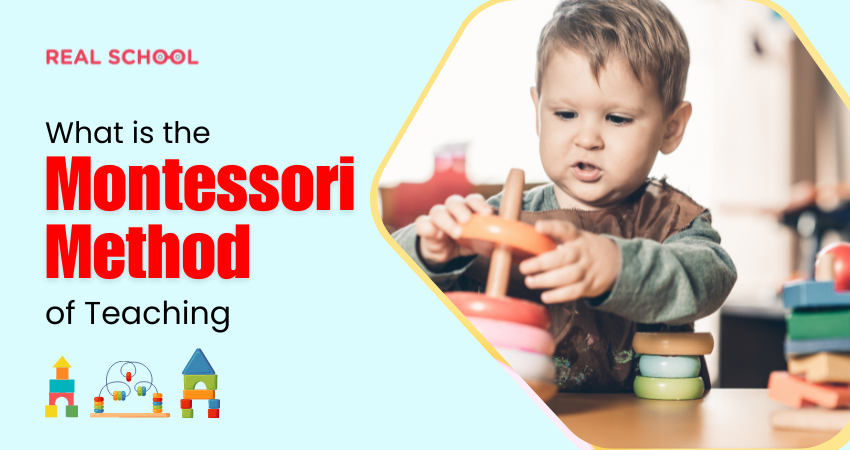The Montessori method of teaching, pioneered by Dr. Maria Montessori in the early 20th century, has revolutionized education by placing the child at the center of the learning experience. With a focus on independence, self-directed learning, and a prepared environment, the Montessori method has stood the test of time as an effective and innovative approach to education. In this article, we will delve into the core principles and practices of the Montessori method, its impact on students, and its continued relevance in modern education.
Understanding the Montessori Method:
At the heart of the Montessori method lies the belief that every child is a curious and capable learner. This method shifts the role of the teacher from a traditional dispenser of knowledge to a facilitator who guides and supports each student’s individual journey. The Montessori classroom is meticulously designed to create a rich and stimulating environment that encourages exploration, problem-solving, and active engagement.
Also Read: Why Montessori Teacher Training is Essential for Aspiring Educators
Core Principles of the Montessori Method:
- Child-Centered Learning: The Montessori method centers on the unique needs, interests, and developmental stages of each child. Teachers observe and assess students, tailoring instruction to meet their individual learning styles and preferences.
- Prepared Environment: A hallmark of the Montessori classroom is the carefully prepared environment. Materials are thoughtfully organized on low shelves, allowing students to access them independently. Each material is designed to isolate a specific concept and provide a self-correcting mechanism, fostering intrinsic motivation and critical thinking.
- Self-Directed Learning: In a Montessori classroom, students have the freedom to choose their activities based on their interests. This choice empowers students to take ownership of their learning, leading to a genuine love for exploration and discovery.
- Hands-On Learning: Montessori education emphasizes experiential learning through hands-on activities. Manipulating materials engages multiple senses, enhancing understanding and retention of concepts.
- Mixed-Age Classrooms: Montessori classrooms often consist of mixed-age groups, allowing younger students to learn from older peers and older students to reinforce their understanding by teaching concepts to younger ones. This dynamic fosters collaboration, empathy, and a sense of community.
The Montessori Teacher’s Role:
Montessori teachers play a pivotal role in guiding students’ learning journeys. Rather than delivering lectures, teachers observe students to understand their interests and needs. They introduce materials at the appropriate developmental level, provide guidance, and step back to allow students to explore. This approach instills confidence, decision-making skills, and a strong sense of responsibility in students.
Materials and Activities:
Montessori materials are carefully designed to support students’ learning objectives. From sensorial materials that refine the senses to mathematical materials that introduce abstract concepts concretely, each material serves a specific purpose. The materials are designed to be self-correcting, allowing students to independently assess their progress and understanding.
Freedom and Independence:
The Montessori method places a strong emphasis on fostering independence. Students are empowered to choose their activities, work at their own pace, and manage their time effectively. This freedom within a structured environment encourages responsibility, self-discipline, and a sense of accomplishment.
Assessment and Evaluation:
In the Montessori method, assessment is an ongoing process rooted in observation and documentation. Teachers closely monitor students’ progress, interests, and challenges, allowing them to tailor instruction and interventions as needed. This approach shifts the focus from external rewards to intrinsic motivation and growth.
Holistic Development:
The Montessori method recognizes that education encompasses more than academics. It nurtures emotional intelligence, social skills, and character development. Students learn to communicate effectively, collaborate with peers, and develop a deep sense of empathy and respect for others.
Impact on Students:
The Montessori method’s impact on students is profound. By fostering a love for learning, critical thinking skills, and a sense of agency, students emerge as confident, curious, and compassionate individuals. They are well-equipped to navigate a rapidly changing world, armed with the ability to adapt, problem-solve, and contribute meaningfully to society.
Continued Relevance in Modern Education:
In an era where standardized testing and rigid curricula often dominate education, the Montessori method provides a refreshing and effective alternative. Its emphasis on creativity, critical thinking, and holistic development aligns with the skills needed in today’s complex and interconnected world.
Conclusion:
The Montessori method of teaching represents a transformative approach that empowers students to become lifelong learners, critical thinkers, and responsible global citizens. By valuing each child’s unique potential, fostering independence, and providing a prepared environment rich with learning opportunities, the Montessori method continues to shape the lives of students, ensuring they are well-prepared to face the challenges and opportunities of the future.







